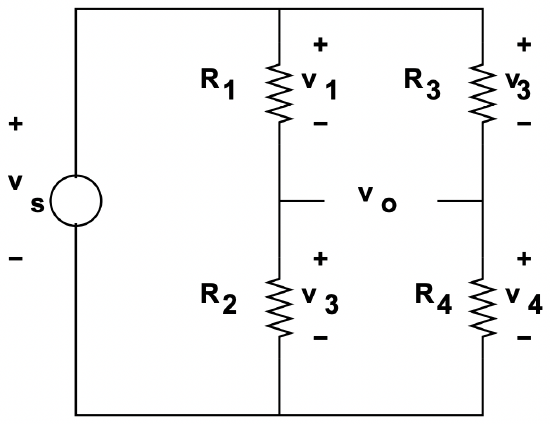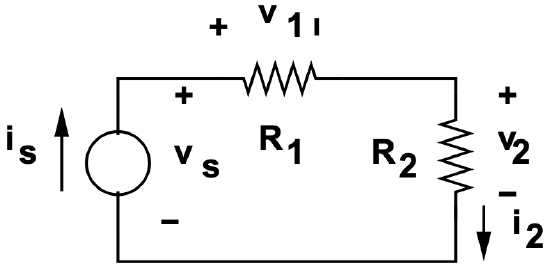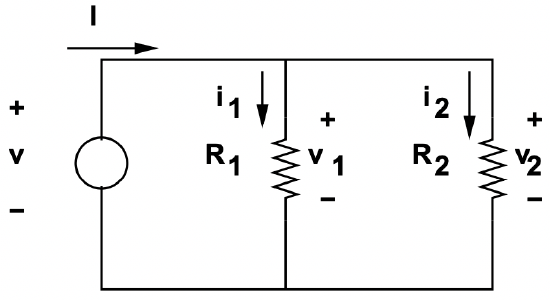1.4: Serial and Parallel Combinations
- Page ID
- 55510
There are a number of techniques for handling network problems, and we will not be able to investigate each of them in depth. We will, however, look into a few techniques for analysis which involve progressive simplification of the network. To start, we consider how one might handle series and parallel combinations of elements. A pair of elements is in series if the same current flows through both of them. If these elements are resistors and if the detail of voltage division between them is not required, it is possible to lump the two together as a single resistance. This is illustrated in Figure 9. The voltage across the current source is:
\(\ v_{s}=v_{1}+v_{2}=i_{s} R_{1}+i_{s} R_{2}=i_{s}\left(R_{1}+R_{2}\right)\)
The equivalent resistance for the series combination is then:
\[\ R_{\text {series }}=R_{1}+R_{2}\label{6} \]
 Figure 8: Wheatstone Bridge
Figure 8: Wheatstone Bridge Figure 9: Series Resistance Combination
Figure 9: Series Resistance CombinationSimilarly, resistance elements connected in parallel can be lumped if it is not necessary to know the details of division of current between them. Figure 10 shows this combination.
Here, current \(\ i\) is simply:
\(\ i=\frac{v}{R_{1}}+\frac{v}{R_{2}}=v\left(\frac{1}{R_{1}}+\frac{1}{R_{2}}\right)\)
The equivalent resistance for the parallel combination is then:
\[\ R_{p a r}=\frac{1}{\frac{1}{R_{1}}+\frac{1}{R_{2}}}=\frac{R_{1} R_{2}}{R_{1}+R_{2}}\label{7} \]
Because of the importance of parallel connection of resistances (and of other impedances), a special symbolic form is used for parallel construction. This is:
\[\ R_{1} \| R_{2}=\frac{R_{1} R_{2}}{R_{1}+R_{2}}\label{8} \]
As an example, consider the circuit shown in Figure 11, part (a). Here, we have four, resistors arranged in an odd way to form a two- terminal network. To find the equivalent resistance of this thing, we can do a series of series-parallel combinations.
The two resistors on the right can be combined as a series combination to form a single, two ohm resistor as shown in part (b). Then the equivalent resistor, which is in parallel with one of the two ohm resistors can be combined to form a single combination part(c). That is in series with the remaining resistor, leaving us with an equivalent input resistance of R = 3Ω.
 Figure 10: Parallel Resistance Combination
Figure 10: Parallel Resistance Combination Figure 11: Series-Parallel Reduction
Figure 11: Series-Parallel Reduction

